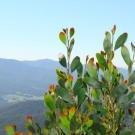

Ed Dunkel
Members2-
Content count
1,111 -
Joined
-
Last visited
About Ed Dunkel
-
Rank
Moderator
Contact Methods
-
Website URL
http://
-
ICQ
0
Profile Information
-
Gender
Male
-
Country
Melbourne, Australia
-
Interests
(Indigenous) natives, cacti, succulents.
Surfing, climbing, entheogens and botany. Also some didj.
Previous Fields
-
Climate or location
cool temp, Au Zone 3-4
-
-
http://www.sciencedaily.com/releases/2011/05/110517162030.htm?utm_source=feedburner&utm_medium=feed&utm_campaign=Feed%3A+sciencedaily+%28ScienceDaily%3A+Latest+Science+News%29&utm_content=Google+International 'Men who regularly drink coffee appear to have a lower risk of developing a lethal form of prostate cancer, according to a new study led by Harvard School of Public Health (HSPH) researchers. What's more, the lower risk was evident among men who drank either regular or decaffeinated coffee. "Few studies have specifically studied the association of coffee intake and the risk of lethal prostate cancer, the form of the disease that is the most critical to prevent. Our study is the largest to date to examine whether coffee could lower the risk of lethal prostate cancer," said senior author Lorelei Mucci, associate professor of epidemiology at HSPH. Lethal prostate cancer is cancer that causes death or spreads to the bones. The researchers chose to study coffee because it contains many beneficial compounds that act as antioxidants, reduce inflammation, and regulate insulin, all of which may influence prostate cancer. Coffee has been associated in prior studies with a lower risk of Parkinson's disease, type 2 diabetes, gallstone disease, and liver cancer or cirrhosis.' The study was published May 17, 2011, in an online edition of the Journal of the National Cancer Institute.
-
http://blogs.reuters.com/oddly-enough/2011/05/16/letting-the-qat-out-of-the-bag/?utm_source=feedburner&utm_medium=feed&utm_campaign=Feed%3A+reuters%2Fblogs%2Foddly-enough+%28Blogs+%2F+US+%2F+Oddly+Enough%29&utm_content=Google+International Just liked their qat filled faces:
-
I was wondering the other day, after a several science news articles again stating the benefits of psychedelics in psychiatry and the studies by MAPS and other Scientists working in the field pointing to such benefits. If there were psychiatrists, psychologists, counsellors, social workers and the likes in Oz that are psychedelic friendly. Are aware of it, use it them selves or either use it in there sessions. Could we put a list together of these people by state? Would that be useful? Or is there a list like this already? E D
-

DMT is in your head, but it may be too weird for the psychedelic renaissance
Ed Dunkel posted a topic in News & Notices
http://www.scientificamerican.com/blog/post.cfm?id=dmt-is-in-your-head-but-it-may-too-2010-04-16 'You know that psychedelics are making a comeback when the New York Times says so on page 1. In “Hallucinogens Have Doctors Tuning In,” John Tierney reports on how doctors at schools like Harvard, Johns Hopkins, UCLA and NYU are testing the potential of psilocybin and other hallucinogens for treating depression, obsessive-compulsive disorder, post-traumatic stress disorder, alcoholism—and for inducing spiritual experiences. Tierney’s brisk overview neglects to mention the most mind-bending of all psychedelics: dimethyltryptamine, or DMT. It was first synthesized by a British chemist in the 1930s, and its psychotropic properties were discovered some 20 years later by the Hungarian-born chemist Stephen Szara, who later became a researcher for the National Institute on Drug Abuse. Why is DMT so fascinating? For starters, DMT is the only psychedelic known to occur naturally in the human body. In 1972, the Nobel laureate Julius Axelrod of the National Institutes of Health discovered DMT in human brain tissue, leading to speculation that the compound plays a role in psychosis. Research into that possibility—and into psychedelics in general--was abandoned because of the growing backlash against these compounds. In 1990, however, Rick Strassman, a psychiatrist at the University of New Mexico, obtained permission from federal authorities to inject DMT into human volunteers. Strassman, a Buddhist, suspected that endogenous DMT might contribute to mystical experiences. From 1990 to 1995, he supervised more than 400 DMT sessions involving 60 subjects at the University of New Mexico. Many subjects reported that they dissolved blissfully into a radiant light or sensed the presence of a powerful, god-like being.' [...] -
http://www.sciencedaily.com/releases/2009/12/091220175502.htm 'Chemicals found in cannabis could prove an effective treatment for the inflammatory bowel diseases Ulcerative Colitis and Crohn's Disease, say scientists. Laboratory tests have shown that two compounds found in the cannabis plant -- the cannabinoids THC and cannabidiol -- interact with the body's system that controls gut function. Crohn's Disease and Ulcerative Colitis, which affect about one in every 250 people in Northern Europe, are caused by both genetic and environmental factors. The researchers believe that a genetic susceptibility coupled with other triggers, such as diet, stress or bacterial imbalance, leads to a defective immune response. Dr Karen Wright, Peel Trust Lecturer in Biomedicine at Lancaster University, presented her soon-to-be published work at The British Pharmacological Society's Winter Meeting in London. She said: "The lining of the intestines provides a barrier against the contents of the gut but in people with Crohn's Disease this barrier leaks and bacteria can escape into the intestinal tissue leading to an inappropriate immune response. "If we could find a way to restore barrier integrity in patients we may be able to curb the inflammatory immune response that causes these chronic conditions." Dr Wright, working with colleagues at the School of Graduate Entry Medicine and Health in Derby, has shown that cells that react to cannabinoid compounds play an important role in normal gut function as well as the immune system's inflammatory response. "The body produces its own cannabinoid molecules, called endocannabinoids, which we have shown increase the permeability of the epithelium during inflammation, implying that overproduction may be detrimental," said Dr Wright. "However, we were able to reverse this process using plant-derived cannabinoids, which appeared to allow the epithelial cells to form tighter bonds with each other and restore the membrane barrier."' [...]
-

Use and Misuse of Alcohol and Marijuana Can Be Traced to Common Set of Genes
Ed Dunkel posted a blog entry in Ed's Blog
http://www.sciencedaily.com/releases/2009/12/091219073005.htm?utm_source=feedburner&utm_medium=feed&utm_campaign=Feed%3A+sciencedaily+(ScienceDaily%3A+Latest+Science+News)&utm_content=Google+International 'Marijuana is the most commonly used illicit drug in the United States. Roughly eight to 12 percent of marijuana users are considered "dependent" and, just like alcohol, the severity of symptoms increases with heavier use. A new study has found that use and misuse of alcohol and marijuana are influenced by a common set of genes. Results will be published in the March 2010 issue of Alcoholism: Clinical & Experimental Research and are currently available at Early View. "Results from a large annual survey of high-school students show that in 2008, 41.8 percent of 12th graders reported having used marijuana," explained Carolyn E. Sartor, a research instructor at Washington University School of Medicine and corresponding author for the study. "Although many may have used the drug on only a few occasions, 5.4 percent of 12th graders reported using it daily within the preceding month." "The active ingredient in marijuana is THC, which mimics natural cannabinoids that the brain produces," added Christian Hopfer, associate professor at the University of Colorado School of Medicine. "The cannabinoid system is critical for learning, memory, appetite, and pain perception. Most users of marijuana will not develop an 'addiction' to it, but perhaps one in 12 will. What is not commonly appreciated about marijuana use is that strong evidence has emerged that it increases the risk of developing mental illnesses and possibly exacerbates pre-existing mental illnesses." "Like any drug, marijuana can be used in a way that negatively impacts quality of life, interfering with functioning at school or work or leading to problems with family and friends," said Sartor. "Although at least three of six symptoms listed in the Diagnostic and Statistical Manual of Mental Disorders -- Fourth Edition (DSM-IV) are needed to meet full criteria for cannabis (marijuana) dependence … the presence of even one or two of these symptoms could create distress or interfere with day-to-day functioning. There is strong evidence for a genetic component to use and dependence on marijuana as well as alcohol, and the use (and misuse) of these substances frequently occur together."' [...] -

New Biosensors Reveal Workings of Anti-Psychotic Drugs in the Living Brain
Ed Dunkel posted a blog entry in Ed's Blog
http://www.sciencedaily.com/releases/2009/12/091213164707.htm?utm_source=feedburner&utm_medium=feed&utm_campaign=Feed%3A+sciencedaily+(ScienceDaily%3A+Latest+Science+News)&utm_content=Google+International "Scientists have resolved a question about how a popular class of drugs used to treat schizophrenia works using biosensors that reveal previously hidden components of chemical communication in the brain. Although delusions and hallucinations characterize the illness, people with schizophrenia also struggle to sustain attention or recall information in a particular order, difficulties that interfere with their ability to hold a job or function well, said Lee Schroeder, a student in the medical scientist training program at the University of California, San Diego. A class of drugs called atypical neuroleptics has become the most commonly prescribed treatment for schizophrenia, in part for their ability to improve these cognitive functions. How they altered brain chemistry was uncertain, however. Atypical neuroleptics elicit large releases of the neurotransmitter acetylcholine. But they had also been shown to barricade a particular type of receptor on the receiving cell's surface, which would block the message. The question was, which action prevails? The answer might guide the development of more effective drugs with fewer side effects. "The hunt is now on," said Schroeder, who shares lead authorship on the paper. "What about these drugs helps? That's where our cells come in." To find out, the team designed biological cells that change color when acetylcholine latches onto this particular class of receptors, called M1. That allowed them to see when M1 receptors received the chemical message, an event neuroscientists had previously been unable to detect in a living, intact brain. "It's a world of signaling between cells that we were blind to before," said David Kleinfeld, professor of physics and member of UC San Diego's center for neural circuits and behavior, who led the collaboration that invented the system." [...] Cells called CNiFERs (pronounced "sniffers") change color to reveal specific kinds of neural messages. (Credit: Kleinfeld Lab, UC San Diego) -

Pot shows promise for reducing multiple sclerosis patients' symptoms
Ed Dunkel posted a blog entry in Ed's Blog
http://www.scientificamerican.com/blog/pos...mult-2009-12-02 'Doses of cannabis might help multiple sclerosis (MS) patients subdue their body spasms and move about more easily, according to a new review of recent studies. However, the authors of the paper note, the patients' apparent relief could also be a matter of perception. After reviewing six trials that tested the effects of tetrahydrocannabinol (THC) and cannabidiol (CBD) extracts on muscle spasms in a total of 481 MS patients, the authors found "evidence that combined THC and CBD extracts may provide therapeutic benefit." In five of the six double-blind, randomized, placebo-controlled trials the researchers analyzed, cannabis-taking patients reported decreases in their spasms. "The subjective experience of symptom reduction was generally found to be significant," wrote the authors, based at the Global Neuroscience Initiative Foundation in Los Angeles. However, the authors conceded, "participants of both active and placebo trials may not be entirely blind to their treatment status, and this may affect subjective analysis." So despite the promising patient reports, MS patients might not get a green light for this treatment just yet. "Objective measures of spasticity failed to provide significant changes," the authors concluded in the paper, published online Wednesday in the journal BMC Neurology. Cannabinoids have, however, been shown to offer neuro-protective benefits for MS patients by quelling inflammation through regulation of microglial cells' cytokine levels, and animal studies have revealed antispastic effects of the chemicals.' [...] -

Waterpipe Tobacco Smokers Inhale Same Toxicants as Cigarette Smokers
Ed Dunkel posted a blog entry in Ed's Blog
http://www.sciencedaily.com/releases/2009/...e+International 'Smoking tobacco through a waterpipe exposes the user to the same toxicants -- carbon monoxide and nicotine -- as puffing on a cigarette, which could lead to nicotine addiction and heart disease, according to a study led by a Virginia Commonwealth University researcher published in the December issue of the American Journal of Preventive Medicine. In the past eight to 10 years, smoking tobacco with a waterpipe, also called a hookah or shisha, has grown in popularity in the United States, especially among adults 18 to 24. The belief among some waterpipe users is that this method of smoking tobacco delivers less tar and nicotine than regular cigarette smoking and has fewer adverse health effects. "The results are important because they provide concrete, scientific evidence that contradicts the oft-repeated myth that waterpipe tobacco smoking does not involve users inhaling the same harmful chemicals that cigarette smokers do," said principal investigator Thomas Eissenberg, Ph.D., professor in the VCU Department of Psychology. "We hope that these results will be used by physicians and public health officials to inform waterpipe tobacco smokers that they risk tobacco-induced nicotine addiction and cardiovascular disease," he said.' [...] -
If you guys are interested in Eremophilas that contain anti-bacterial serrulatane diterpenes amongst other things, check out what I posted at the Australian Bushfood (Bushtucker) and Native Medicine Forum (http://www.bushfood.net/viewtopic.php?t=1033) Or basically... Eremophilas to watch out for are: E. drummondii E. linearis E. serrulata E. acrida E. neglecta E. virens E. prolata (Antimicrobial activity of some Australian plant species from the genus Eremophila - Journal of Basic Microbiology 2007, 47, 158–164) Some articles: http://www.sciencealert.com.au/news/20080703-17007-3.html http://www.abc.net.au/news/stories/2009/01/23/2473297.htm http://abc.gov.au/science/articles/2009/01...tm?topic=enviro
-
http://www.newscientist.com/article/dn1809...ref=online-news 'Vital investigations into unexplored aspects of recreational drug use could be abandoned following the removal of the UK government's top scientific adviser on drug misuse. They include investigations of the impact of polydrug use, for example, in which individuals are simultaneously dependent on several drugs. Last week, David Nutt of Imperial College London was sacked as chairman of the UK's Advisory Council on the Misuse of Drugs. UK home secretary Alan Johnson wrote in The Guardian newspaper on 31 October that he took this action because Nutt had attacked government policy. Johnson was annoyed that Nutt had repeated in public that there's substantial evidence demonstrating alcohol and tobacco to be far more harmful than either cannabis or ecstasy.' [...]
-
http://www.abc.net.au/news/stories/2009/01/23/2473297.htm 'An extract from a flowering desert plant used as traditional medicine by Indigenous Australians could one day be used to coat hip transplants and other biomedical devices, researchers say. Professor Hans Griesser and colleagues are presenting their work at a biomaterials conference at the University of New South Wales in Sydney this week. "We can learn so much from nature and traditional knowledge," says Professor Griesser, a materials scientist from the University of South Australia. He says Aboriginal people use leaves of eremophila plants, which grow in Australia's desert areas, to make ointments for skin abrasions and gargles for throat infections. Professor Griesser and team extracted eleven compounds called "serrulatane diterpenes" from the leaves of eremophila and found they had the same bacterial killing power as established antibiotics. The researchers then developed a method of permanently bonding the compounds to plastic and metal materials used to make implants such as catheters, heart valves, hip or knee implants. Professor Griesser says antibacterial coatings on implants are important because those devices provide a perfect site for bacteria to become established. He adds this could lead to serious infection or death of the implant recipient. "If someone in their 70s has an artificial hip inserted and then they have an inflammation and have to go back to get the hip taken out and another put in, that's traumatic for someone who is already compromised health-wise," he said. He says the problem with traditional antibiotics like penicillin is they do not work well when they are on the surface of a biomedical device. In tests using staphyloccocus epidermis over 48 hours, the team found a very thin layer of the antibacterial coating stopped nearly all bacteria from attaching to the devices.' [...] Aboriginal people use leaves of eremophila plants to make ointments for skin abrasions and gargles for throat infections. (Hans Griesser)
-
http://www.scientificamerican.com/article....via-on-schedule "As the source of the most powerful natural hallucinogen known, salvia is drawing scrutiny from U.S. authorities who want to restrict this Mexican herb, now used recreationally by some. But neuroscientists worry that controlling it before studies have determined its safety profile is premature and could hamper research of the drug's medicinal value. Increasingly, evidence is piling up that it could lead to new and safer antidepressants and pain relievers, as well as even help in improving treatments for such mental illnesses as schizophrenia and addiction. The plant, formally known as Salvia divinorum, has a long tradition of shamanic usage by the Mazatec people of central Mexico. Salvinorin A, the primary psychoactive component, is part of a class of naturally occurring organic chemicals called diterpenoids, and it affects neural receptors in the brain similar to those that respond to opiate painkillers such as morphine—but without euphoric and addictive properties. That is because salvinorin A binds mostly to only one type of receptor (the so-called kappa opioid receptor) and not significantly to receptors that could lead to addiction (such as the mu opioid receptor). As the popularity of salvia has risen over the past 16 years—its psychoactive properties were discovered in 1993 by Daniel Siebert, an independent ethnobotanist based in Malibu, Calif.—calls to treat the plant as an illegal drug have grown louder. Twelve states have recently placed S. divinorum in their most restrictive controlled substance category, and four others have laws restricting sales. The U.S. Drug Enforcement Administration has listed salvia as “a drug of concern” and is looking into the drug to determine whether it should be declared a Schedule I controlled substance, on par with heroin and LSD." [...] ALTERED STATES: The Mexican herb Salvia divinorum contains the most powerful natural hallucinogen known. Scientists think that it could treat several types of mood disorders but worry that regulations could stonewall research.
-
Well, they live on top of Mt Buffalo naturally. So they get loads of rain and snow in winter, and spring/autumn. But they grow amongst granite slaps/boulders/soil, so high drainage. It is also very exposed, loads of wind, sun and heat in summer and cool nights. I tried to find a location in the garden like that. However, we get no snow and there is not granite (except for some added on planting). I think letting her get rain and loads of air circulation is good, so long the soil drains well. The summers get sunny, hot and dry (probably not too much like the top of Mt Buffalo were there would be many more cool breaks between the hot days with cooler nights) she copes with it quite well. The phylloids get leathery and thinner (veiny) and the stems woody. But she survives! I try not to water her at all! Only before extreme day of 40 and over I might. But even then I'd rather let her struggle and get strong. Hope that helped. E D
-
http://www.msnbc.msn.com/id/32778137 ‘A Coatesville mother made her 6-year-old daughter drive a car because “[mom] was sleepy” after smoking “that stinky stuff,” according to police. [..] Officer Robert Keetch said he had to do a double take after seeing the little girl driving. “There were two white knuckles and a little head popping over the stearing wheel,” he said. The woman, Lakisha Hogue, was sitting in the passenger seat, laughing, when a patrol officer pulled her over, said police. Hogue told the Officer Keetch that she was teaching her daughter how to drive. “Mom made me drive because she was sleepy,” the girl told police. Then police say the aunt asked her niece, “Was your mom smoking that stinky stuff again?” The girl replied “yes,” say police.’ [...]



